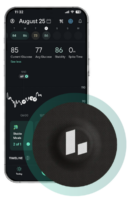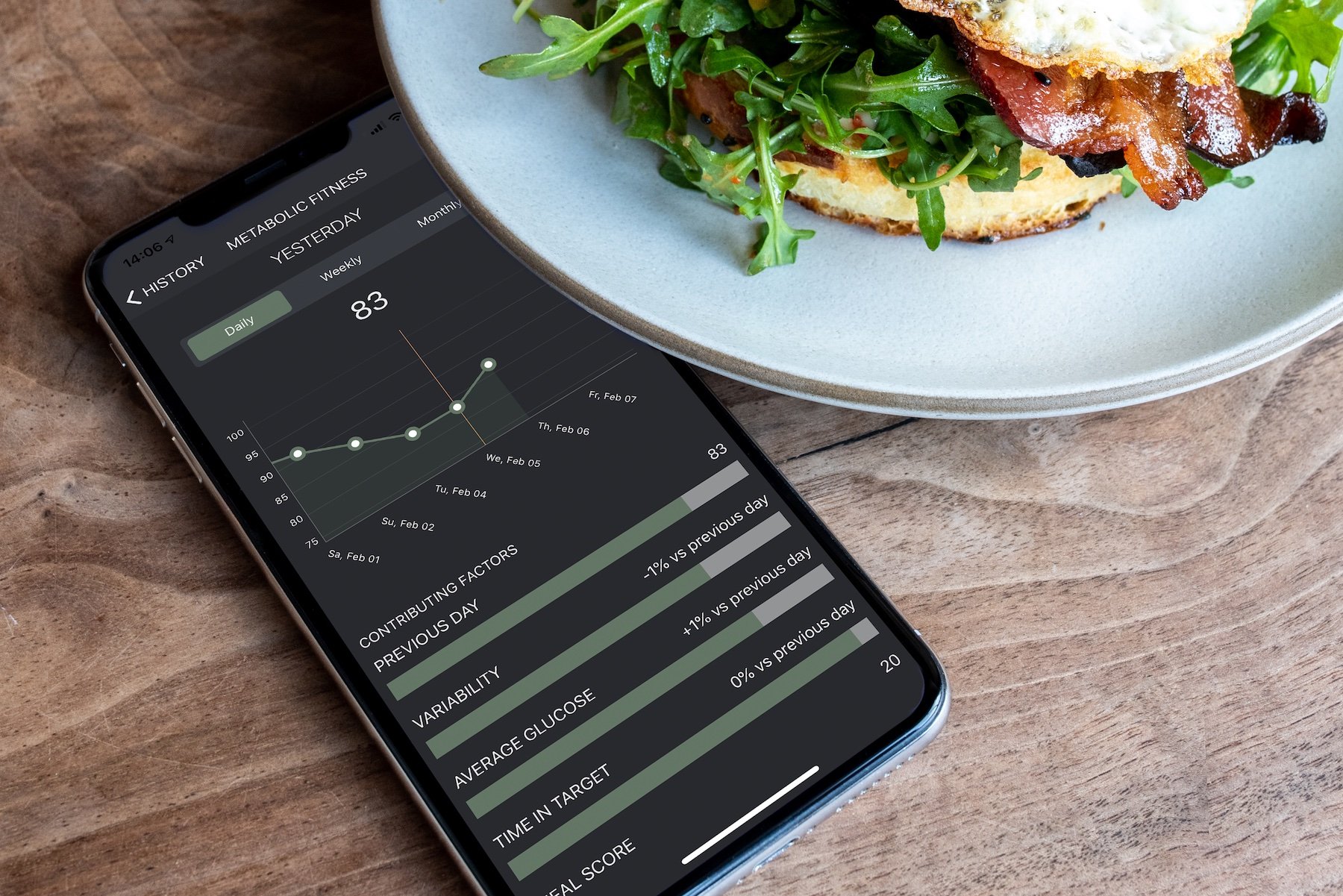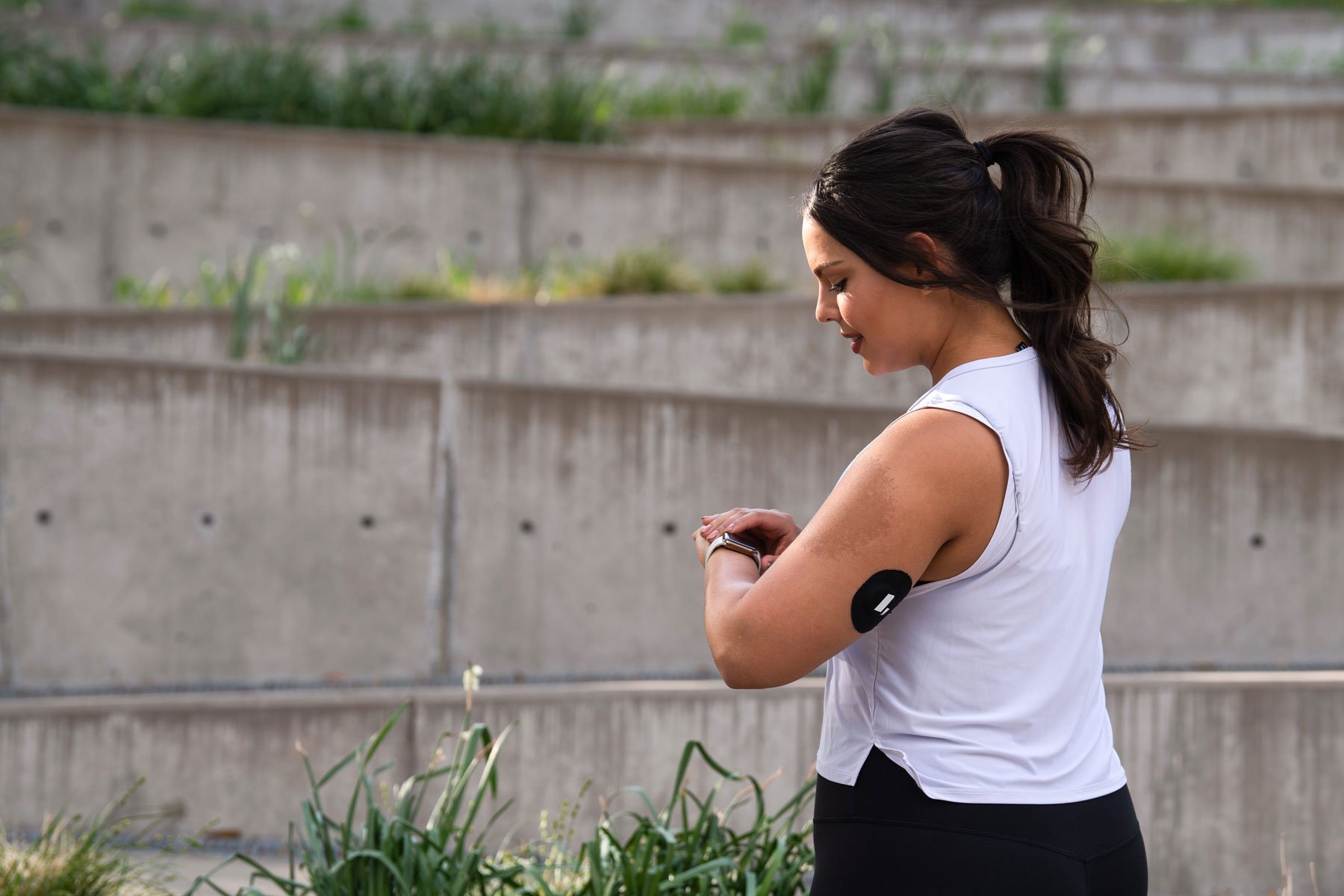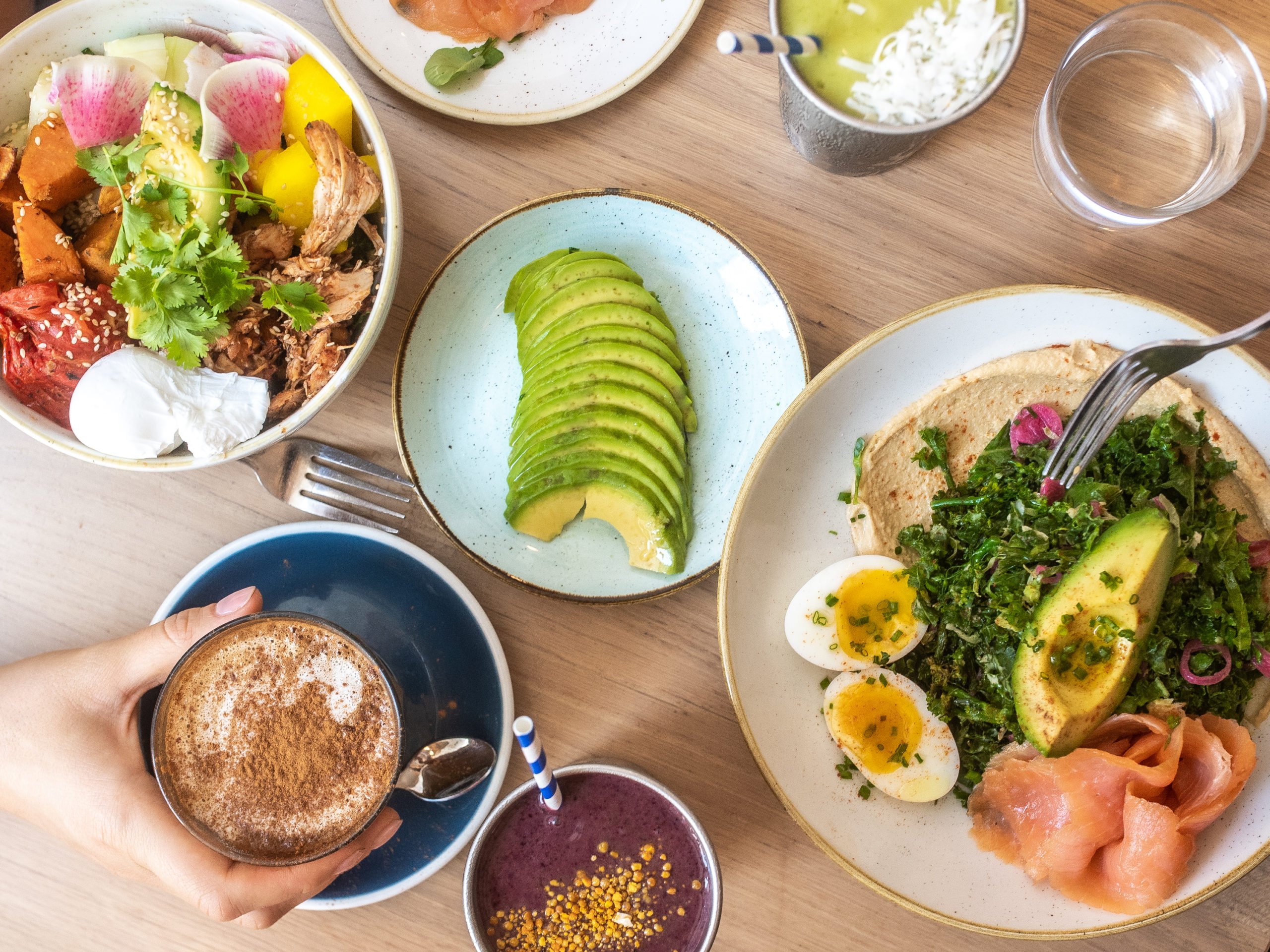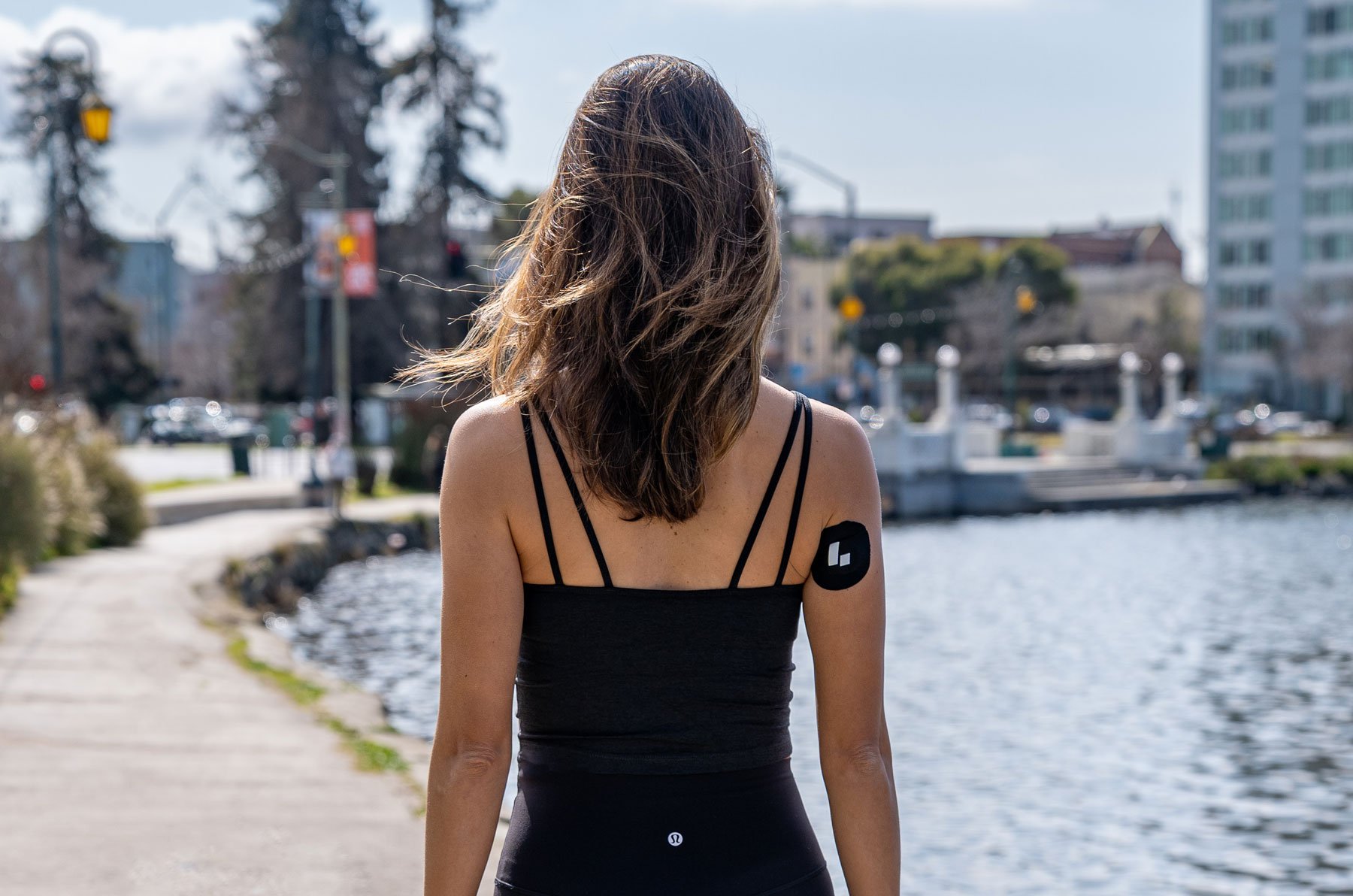After your morning run, you and your friend order the same smoothie with a banana in it. You hang out briefly and then check your glucose response on your continuous glucose monitors (CGMs). One of you is experiencing a blood sugar spike while the other’s glucose level stays stable. How is this possible?
Even when eating the same foods, people can have wildly different glucose responses. And your individual glucose response will have different impacts on your health and goals compared to your friend’s levels. This phenomenon is called bio-individuality. Read on to learn about bio-individuality, why it matters for diet and nutrition, and how to leverage it to reach your metabolic health goals.
What is bio-individuality?
In a nutshell, bio-individuality—also sometimes called nutritional individuality or personalized nutrition—means that diet and nutrition are not one-size-fits-all. While the concept has existed since at least the 1960s, a growing body of research shows that individualized factors determine each person’s glucose response to the same meal.
In a 2015 study, researchers used CGM to track the glucose responses to nearly 50,000 meals in 800 adults who were not diagnosed with Type 2 diabetes. Each participant wore a CGM for one week and logged their meals, physical activity, and sleep. They followed their normal daily routines and eating habits, except for their first meal of the day, which was one of four standard meal options. The scientists found a high interpersonal variability, or bio-individuality, of glucose responses when different people ate the same meals.
The researchers further used machine learning to predict participants’ glucose responses. Factors included in the predicted response included a person’s blood parameters (such as blood pressure and cholesterol), gut microbiome, general dietary habits, physical activity, and anthropometrics. Anthropometrics are body measurements, such as height and hip circumference. The researchers replicated their findings with a different group of 100 participants. They then used the predictive factors to provide personalized nutrition recommendations for 26 new participants. They found that personalized dietary changes over just one week helped improve postprandial (after-meal) glucose responses and reduced glycemic variability.
(Glycemic variability refers to fluctuations in glucose levels for a given time interval—think blood sugar spikes and crashes. High glycemic variability is linked to worsening metabolic health in the long term, and can be an indicator of developing insulin resistance.)
A 2020 study also assessed how the same meal affected different participants, including twins. The researchers recruited 1,002 healthy people, of which 460 subjects made up sets of identical twins. The study showed a wide variation in postprandial responses to the same meals among participants and even the identical twins. The researchers also found that within participants, the same meal eaten at different times of the day produced different postprandial glucose responses on CGM.
Finally, a 2022 study looked at postprandial glucose response in what they called a “relatively homogenous” group of 114 female participants. The group was homogenous because they had similar age and weight status, were from the same ethnic group, and lived on the same campus. None had prediabetes or Type 2 diabetes. They also were not on diets or engaging in high-intensity exercise. After fasting for 12 hours, the participants underwent two feeding experiments on different days. In one session, they ate a portion of cooked white rice. And in the other session, they consumed a glucose solution. The researchers conducted finger-prick glucose testing before the participants ate and at intervals after they ate—up to 180 minutes. Despite the many factors the participants had in common, the researchers observed high interpersonal variability in glucose response to the same meal across all intervals of finger-prick glucose testing.
Ultimately, based on these studies, gut microbiome, quality and quantity of sleep, meal timing, food order, body composition, risk factors related to metabolic health (e.g., blood pressure, cholesterol levels, and more), and other factors affect glucose response to the same food from person to person and even in the same person.
Why does bio-individuality matter?
We know that ultra-processed foods and added sugar harm our overall health. However, the range of additional diet and nutrition advice available is often highly confusing. Should you eat a ketogenic diet or a Mediterranean diet? Should you be vegetarian? Blanket-statement diet advice doesn’t account for bio-individuality. What works well for one person may not work well for another and may even harm their health.
Instead of following universal advice that may not apply to you, it’s more beneficial to learn how different foods affect your blood sugar levels and, subsequently, how you feel. Blood sugar levels affect your mood, energy, and your long-term health. High blood sugar is tied to eight of the ten leading causes of death. Your blood sugar levels also impact your ability to achieve health goals, whether you’re aiming for weight loss, boosting athletic performance, finding hormonal balance, managing symptoms of various conditions, or something else.
A blood sugar spike occurs when your post-meal glucose level skyrockets. A spike is often followed by reactive hypoglycemia or a steep drop in blood sugar. The blood sugar “crash” occurs because the body may overcorrect a spike with an insulin surge. A crash can leave you feeling shaky, moody, or fatigued, and it can drive cravings for sugar-laden or carbohydrate-heavy foods that can lead to another spike followed by another crash—a vicious cycle. These spikes and crashes contribute to high glycemic variability. However, research shows that for improved health, our glucose levels should look more like gently rolling hills than peaks and valleys.
How do I learn what foods affect me?
You can learn how different meals or foods affect you by tracking your blood sugar and noticing how you feel. One option is to use CGM, and another is to do finger-prick testing.
CGM tracks your glucose in real time. Most glucose tests at the doctor’s office look at glucose for a single moment, or they glean an average over several months. With CGM, you can monitor glucose constantly and see how different factors—such as sleep, stress, food order, food timing, physical activity, and even your menstrual cycle—affect your levels.
By using a CGM with an app like Levels, which allows you to log your meals and scores them according to glucose response, you can more easily see which of the foods you eat help you function your best and which exacerbate unwanted symptoms, such as brain fog or fatigue. These apps also help you see long-term trends by showing you data over extended periods. For example, you may notice that your glucose levels stay more stable throughout the morning and help you feel fuller after repeatedly opting for eggs instead of oatmeal, which spikes blood sugar in many people. You might also notice that such a swap contributes to weight loss, better energy levels, and focus.
A CGM sensor is a small disc with a tiny filament that measures glucose levels in the interstitial fluid between cells just under the skin’s surface. You can then view your glucose levels on a smartphone app, like the one from Levels, the company behind this blog.
Finger-prick testing is different. It measures blood glucose in your capillaries. You gently prick your finger with a spring-loaded needle to glean a few drops of blood. You place the blood on a test strip that goes into a glucometer device to produce a reading. Both CGM and finger-prick testing look at glucose levels. However, you’ll have to prick many times throughout the day with the finger-prick method, whereas with a CGM, you change the sensor only about every two weeks.
Bottom line
Ultimately, diet and nutritional advice isn’t one-size-fits-all. We have bio-individuality. Therefore, categorizing foods as “good” or “bad” for the whole population isn’t useful, researchers say. That’s because the same foods can affect people and their glucose levels differently. Tracking how different foods affect your health and goals via CGM or another method helps you dial in the eating and lifestyle habits that keep you functioning and feeling your best.
 See how food affects your metabolic health
See how food affects your metabolic health
The best way to understand your glycemic response to what you eat is with a CGM, and an app like Levels to help you understand your data. Levels members get access to the most advanced CGMs along with personalized guidance to build healthy, sustainable habits. Click here to learn more about Levels.

